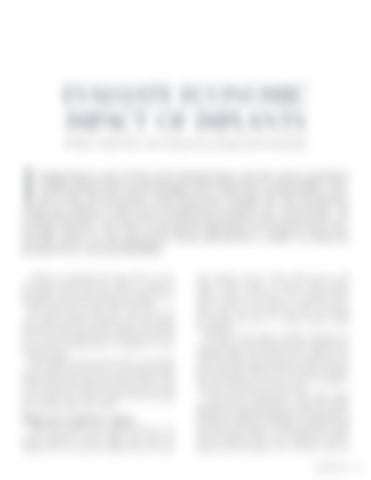Evaluate economic impact of implants By Wade T. Nichols, Ph.D., Senior Technical Services Manager, Merck Animal Health
I
mplanting is one of the most researched, proven and consistent cattle production technologies that improves sustainability, protects the environment and improves margin for the producer, while providing a safe and wholesome product for consumers. As a beef industry, we want to be good stewards of the land and continually strive to use resources more efficiently in order to improve productivity and profitability. Implants are small pellets that release slowly over time and contain growth hormones, which are natural or comparable to the animals’ naturally occurring hormones that allow the animal to optimize growth naturally. We typically castrate male calves. This removes the testes, which would have produced testosterone, estrogen and other hormones that naturally improve a calf ’s growth rate over time. By implanting, we are allowing some of the natural growth processes that we would see in noncastrated animals. These implants are placed under the skin on the backside of the ear because the ear does not enter the human food supply. Implants help improve the natural ability of cattle to convert resources, namely feed and water, into live and carcass weight. They improve margin by both increasing gain and decreasing the cost of gain.
Weight gain is significant, additive At the cow/calf level, calves implanted will have 15-25 pounds additional weaning weights than calves not implanted. For an investment of approximately $1.50 per
head, implants result in a $30 to $40 increase in calf value in today’s market.1 At $30 per head implants exhibit a return on investment of 19:1. Implants are the most cost-effective way to improve margin and sustainability. Steers and cull heifer calves that are destined for finishing and sale to a terminal market should be implanted. The effect of each implant is additive throughout the various segments of the beef industry. The margin and sustainability within each segment will be improved. The stocker and feedlot segments exhibit even greater responses than nursing calves. Research has proven that cattle given the correct implants on the ranch, or within each segment, will continue to perform at the next stage. At the stocker or backgrounder, overall added weight gain depends on how long cattle are on grass, but ranchers typically see an additional weight gain of 25-30 pounds. At the feedyard, implanted cattle will gain an additional 60-90 pounds of carcass weight or 75-140 pounds of live weight over non-implanted cattle with no additional resources. Implants assist the producer to do “a lot more, with a lot pacdvms.com
37













